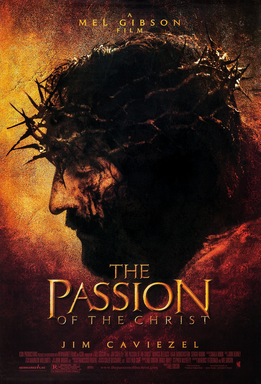Easter films? Note that the title says films for, and not about, Easter, as it isn’t an especially cinema-friendly holiday. There certainly exist plenty of kid flicks based around it, and an entire subgenre of horror films—HOLIDAYS, EASTER BUNNY BLOODBATH, BEASTER DAY: HERE COMES PETER COTTONHELL, etc.—but very few of those film have much in the way of worthwhile content.
This means that doing up an Easter movie ranking requires creativity. Easter, you’ll find, isn’t explicitly referenced in any of the following films, although the themes and imagery associated with the holiday—Christianity, paganism, rabbits, eggs and spring break—very much are.
1. THE PASSION OF THE CHRIST
Supposedly “Jesus is the reason for the season,” although in truth the roots of Easter stretch back much farther (see below). But in deference to the fact that Easter as we know it is based around the resurrection of one Jesus Christ, I present to you Mel Gibson’s PASSION OF THE CHRIST.
It’s essentially THE GOSPEL ACCORDING TO LUCIO FULCI, an Old Testament torture fest that stands out from other Jesus movies due to the simple fact that it’s consistently exciting, confining itself to the most dramatic part of the Christ saga: the final 12 hours, rendered in the aggressive, testosterone-fueled manner of the action movies with which Mr. Gibson made his name as an actor. Also included is the all-important resurrection, although it’s arguably the film’s weakest portion.
2. MARKETA LAZAROVA
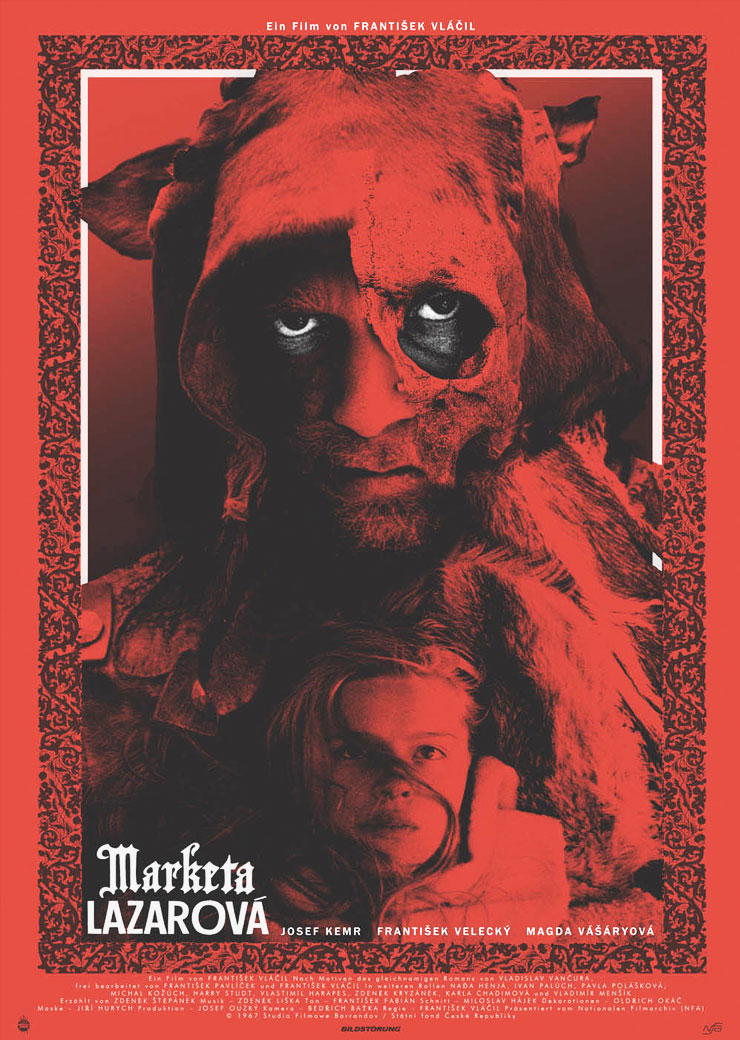 Europe’s shift from paganism to Christianity is integral to Easter, which encompasses both traditions. Hence, MARKETA LAZAROVA (1967), a 13th Century set Czech import that takes pagan-vs.-Christian as its major theme, makes for ideal (if unorthodox) Easter viewing.
Europe’s shift from paganism to Christianity is integral to Easter, which encompasses both traditions. Hence, MARKETA LAZAROVA (1967), a 13th Century set Czech import that takes pagan-vs.-Christian as its major theme, makes for ideal (if unorthodox) Easter viewing.
The film is widely renowned as the cinema’s most realistic portrayal of the Middle Ages, meaning it’s a major downer that ranks with more famous medieval-set bummers like DAY OF WRATH, ANDREI ROUBLEV and THE PASSION OF BEATRICE. Worse, MARKETA LAZAROVA’s narrative, involving the young woman title character mistreated by a would-be suitor amid a squalid backdrop of war, witchcraft and excess brutality, is presented in a (deliberately) confused and fragmented manner. Yet the visual invention and magisterial staging of director Frantisek Lacily, combined with the thematic heft, commands attention.
3. INLAND EMPIRE
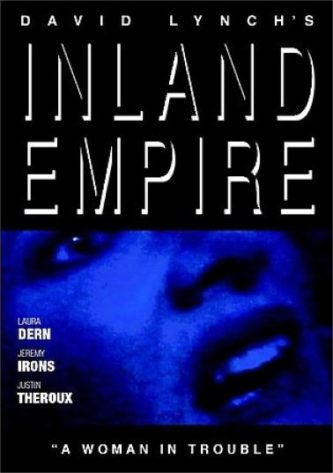 Rabbits are of course integral to Easter, due to their status as symbols of fertility, and also the widely held (if incorrect) belief that the critters were hermaphrodites that bred asexually. David Lynch’s RABBITS, created in 2002 for the late DavidLynch.com (which has since been folded into the DAVID LYNCH THEATER YouTube channel), was a quasi-sitcom featuring a handful of MULHOLLAND DRIVE cast members wearing rabbit’s head masks while tooling around a room in Lynch’s Hollywood Hills home. Portions of the show were incorporated into Lynch’s digitally shot 2006 epic INLAND EMPIRE, where their inclusion makes zero sense—meaning they fit in quite well with the rest of the film, which is composed of dissonant elements. Included are clips from an incomplete video project Lynch shot in Poland and much miscellaneous footage he accrued over the years, tied into a confounding non-narrative about an aging starlet (Laura Dern) entering a labyrinthine subconscious fugue. It’s a concoction that really shouldn’t work, but somehow does.
Rabbits are of course integral to Easter, due to their status as symbols of fertility, and also the widely held (if incorrect) belief that the critters were hermaphrodites that bred asexually. David Lynch’s RABBITS, created in 2002 for the late DavidLynch.com (which has since been folded into the DAVID LYNCH THEATER YouTube channel), was a quasi-sitcom featuring a handful of MULHOLLAND DRIVE cast members wearing rabbit’s head masks while tooling around a room in Lynch’s Hollywood Hills home. Portions of the show were incorporated into Lynch’s digitally shot 2006 epic INLAND EMPIRE, where their inclusion makes zero sense—meaning they fit in quite well with the rest of the film, which is composed of dissonant elements. Included are clips from an incomplete video project Lynch shot in Poland and much miscellaneous footage he accrued over the years, tied into a confounding non-narrative about an aging starlet (Laura Dern) entering a labyrinthine subconscious fugue. It’s a concoction that really shouldn’t work, but somehow does.
4. ALICE (NECO Z ALENKY)
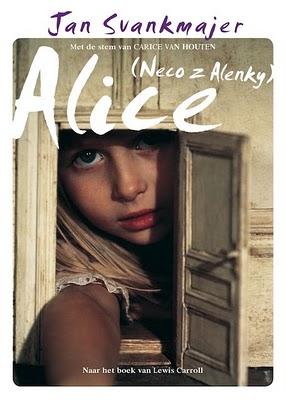 It’s not the best or most faithful ALICE IN WONDERLAND adaptation, but Jan Svankmajer’s 1988 ALICE contains the most striking White Rabbit I’ve seen in any film. As befitting Svankmajer’s East European sensibility, his ALICE is a surreal affair set largely in a musty old flat, where the young Alice (Kristýna Kohoutová) finds herself cavorting amidst a plethora of animated cut-outs and living puppets, which include the aforementioned White Rabbit. Alice is turned into a doll herself on more than one occasion, after crawling into a desk drawer and having a tiny fellow build a campfire on her head. She also gets involved in the mad tea party, where she has to face the Queen, a two-dimensional cut-out presiding over a kingdom of paper figures she beheads with scissors. Svankmajer’s blend of live action and stop motion animation, combined with an obsessive attention to detail, is totally distinctive, and, as in subsequent Svankmajer features like FAUST, CONSPIRATORS OF PLEASURE and LITTLE OTIK, has a definite oft-kilter charm.
It’s not the best or most faithful ALICE IN WONDERLAND adaptation, but Jan Svankmajer’s 1988 ALICE contains the most striking White Rabbit I’ve seen in any film. As befitting Svankmajer’s East European sensibility, his ALICE is a surreal affair set largely in a musty old flat, where the young Alice (Kristýna Kohoutová) finds herself cavorting amidst a plethora of animated cut-outs and living puppets, which include the aforementioned White Rabbit. Alice is turned into a doll herself on more than one occasion, after crawling into a desk drawer and having a tiny fellow build a campfire on her head. She also gets involved in the mad tea party, where she has to face the Queen, a two-dimensional cut-out presiding over a kingdom of paper figures she beheads with scissors. Svankmajer’s blend of live action and stop motion animation, combined with an obsessive attention to detail, is totally distinctive, and, as in subsequent Svankmajer features like FAUST, CONSPIRATORS OF PLEASURE and LITTLE OTIK, has a definite oft-kilter charm.
5. ANGEL’S EGG (TENSHI NO TAMAGO)
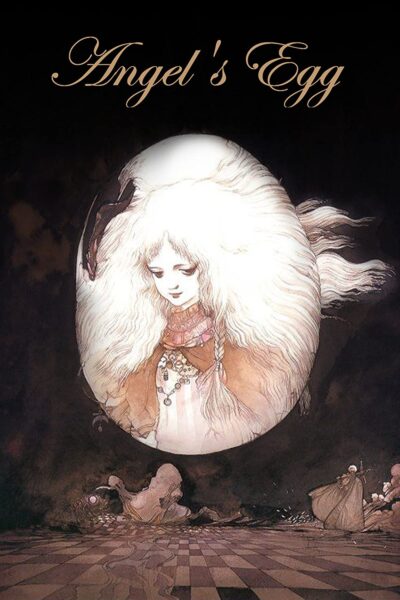 This 1985 anime feature is the ultimate egg movie. A collaboration between artist Yoshitaka Amano (VAMPIRE HUNTER D) and filmmaker Mamoru Oshii (GHOST IN THE SHELL), ANGEL’S EGG is a beautifully visualized, glacially paced mind-roaster. The setting is an unspecified science fictionish milieu where a girl carries a sacred egg through a bleak, violent landscape.
This 1985 anime feature is the ultimate egg movie. A collaboration between artist Yoshitaka Amano (VAMPIRE HUNTER D) and filmmaker Mamoru Oshii (GHOST IN THE SHELL), ANGEL’S EGG is a beautifully visualized, glacially paced mind-roaster. The setting is an unspecified science fictionish milieu where a girl carries a sacred egg through a bleak, violent landscape.
The gal is redolent of innocence and purity in an overtly Christian allegory that explicitly references Noah’s Ark, and uses eggs as the symbols of fertility and renewal they’ve assumed in both the pre and post-Christian world.
6. GILGAMESH (GILGAMES)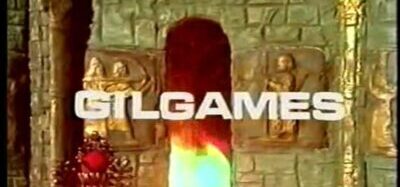
A popular claim is that Easter has its origins in the cult of the ancient Sumerian goddess of fertility Inanna, or Ishtar. She’s said to have been delivered via a divine egg, and undergone a springtime resurrection following a wintertime death in the underworld. Unfortunately Mesopotamian mythology isn’t too prevalent in cinema, with this 1976 Hungarian TV version of THE EPIC OF GILGAMESH being the only worthwhile example of such.
It was written and directed by the late András Rajnai, who specialized in small screen fantasy (his other telefilms include adaptations of DANTE’S INFERNO, GULLIVER’S TRAVELS and ARABIAN NIGHTS). GILGAMESH is entirely in keeping with his oeuvre, with incredibly grandiose subject matter—involving the aforementioned Ishtar (Teri Tordai) attempting to thwart King Gilgamesh (István Bujtor), who like her eventually makes his way into the underworld—executed with comically limited resources. The art direction and special effects are strictly of the Sid and Marty Croft variety (meaning they were already out of date in ‘76), and the overwrought performances harkening back to silent movie acting. Yet as with all of Rajnai’s work there’s a definite appeal, and even magic, to the proceedings, proving that misguided ambition can be a good thing.
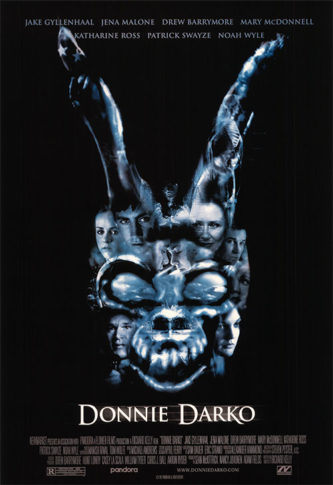 7. DONNIE DARKO
7. DONNIE DARKO
Truthfully I’ve always found this 2001 film, the debut feature of writer-director Richard Kelly, a mite overrated (I much prefer Kelly’s follow-up SOUTHLAND TALES), but DONNIE DARKO contains one of cinema’s most striking evil rabbits, a spectral creep named Frank who makes periodic appearances to the freaked-out title character (a young Jake Gyllenhaal).
I could have done without the Tarantino-esque smart-assery that passes for dialogue, but Kelly succeeds in creating a blindingly original and totally assured mystery whose “explanation” resides solely in the mind of the viewer—likewise the twisty sci fi-tinged climax (which, FYI, is more concretely explained in the 2004 director’s cut).
8. SPRING BREAKERS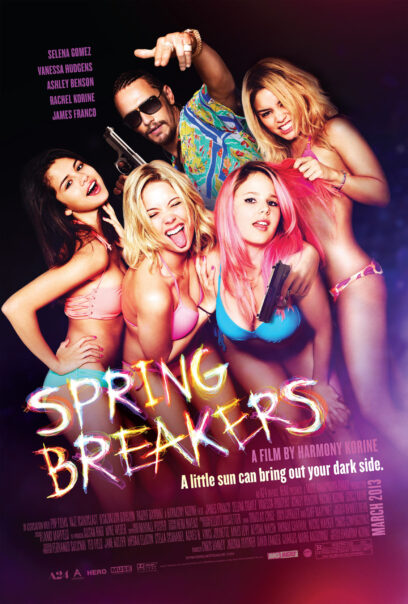
This list must contain at least one movie about spring break, it being a quintessential Easter-time tradition that began in Europe in the 19th Century and spread to America in the 1930s. Since then spring break has grown in status to become a yearly orgy of unchecked hedonism that often involves violence and disorder. This 2012 indie from writer-director Harmony Korine (GUMMO) is about four college hotties, three of them (Selena Gomez, Vanessa Hudgens and Ashley Benson) played by former Disney starlets (and the fourth by Korine’s wife Rachel), getting into all sorts of trouble during an Easter sojourn in Florida, the epicenter of America’s spring break festivities. SPRING BREAKERS can be viewed as an outrageous black comedy or a trenchant commentary on American excess, or perhaps both. It offers plenty of disreputable fun, in any event, with gratuitous violence, excess female pulchritude, copious drug use, an over-emoting James Franco and compelling dark-hued photography by Benoît Debie, Gaspar Noe’s cinematographer of choice.
9. EOSTRE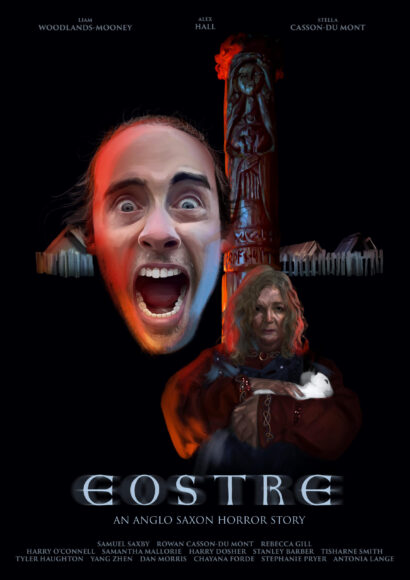
This 2022 horror short, the winner of a couple of prestigious awards (and a nominee at Cannes), gets a nod for being the only film yet made to explicitly deal with the Germanic goddess Eostre, who symbolized fertility, and from whose name the term Easter is widely believed to have originated. Furthering the connection is the fact that Eostre tends to be associated with rabbits, which play a part in EOSTRE. It takes place in a medieval village where Eostre is worshipped, and where a naïve monk (Liam Woodlands-Mooney) turns up to convert the populace to Christianity; needless to say, he’s in for a rough ride, as the goddess is very much extant in the village, and has designs on the monk. The film is a low-key slow burn that could have stood to be a bit livelier overall, but accomplishes its goals admirably, inspiring thought and leaving a singularly chilly impression.
10. NIGHT OF THE LEPUS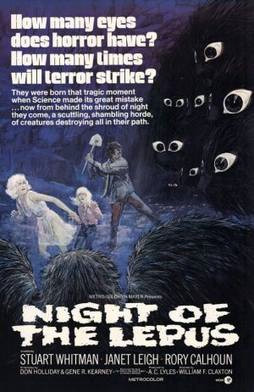
Yet more rabbits are featured in NIGHT OF THE LEPUS (1972), a prime example of what-were-they-thinking??? Cinema. It was the first and only killer bunny movie, with a zoologist (Stuart Whitman) trying to contain a rabbit infestation by injecting several adult male hares with an experimental hormone intended to disrupt the breeding cycle, but which causes the bunnies to grow to several times their natural size and develop a taste for human flesh. It’s interesting that despite a substantial budget director William F. Claxton turned out a movie that plays just like the budget-lite trash fest you’d expect.

